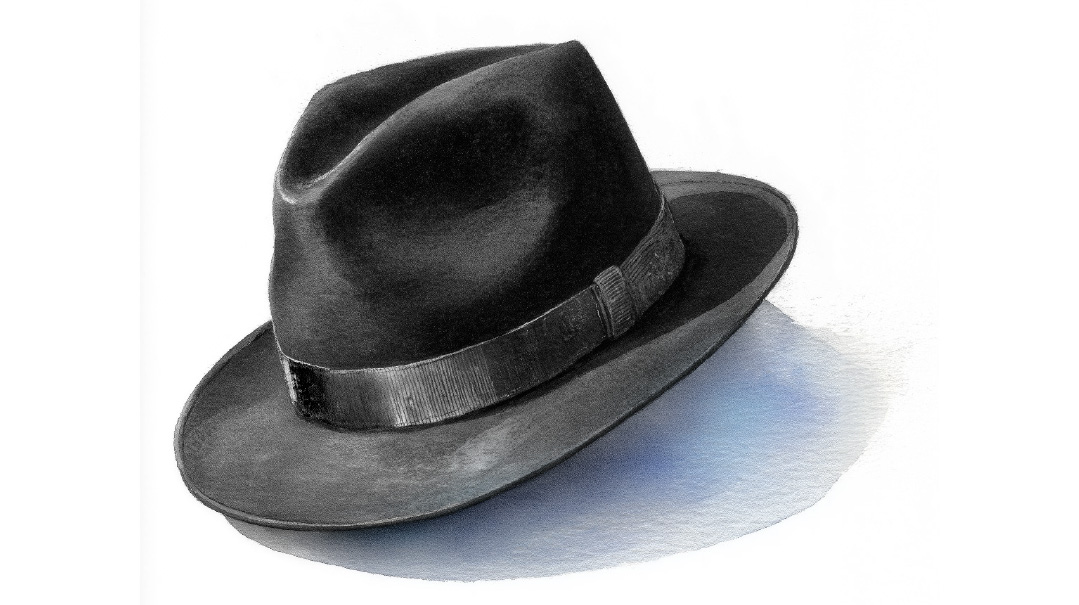If Clothes Make the Man, Do Hats Make the Jew?

Clothes and head coverings define us, and clothes and head coverings divide us

Headline in an online Orthodox newspaper: “Trump Tariffs Could Send Black Hat Prices Soaring, Threatening Bnei Torah Across USA.”
Really, now! Threatening? Isn’t that verbal overkill? Perhaps the headline writer meant to write “worrying,” “upsetting,” “affecting,” or some such. When bread, milk, and vegetables prices soar — as they have — that is a threat, but if hat prices go up, say, from 150 to 200 dollars, that is painful, but not quite a threat to life and limb. Whereas one cannot eat last year’s veggies or drink sour milk, one can certainly wear an old hat.
Which leads to some random thoughts: Though the issue is not crucial, this headline illustrates the widespread carelessness with words. When we mean funny, we say “hysterical”; when we mean good, we say “fabulous”; when something is lovely, it is “awesome.” Soon enough, words lose all meaning and we run out of ways to express things, so that when something truly fills us with awe — the Kosel Hamaaravi, the Swiss Alps, the Grand Canyon, a once-in-a-century talmid chacham — we lack words. Thus, we have today’s verbal inflation; if every freshly ordained rabbi is a gaon, then the term becomes meaningless and so we use gaon amiti — “true gaon” ( implying that the adjective-less gaon is not amiti?). The dictum in Devarim 23:24, “Motza sefasecha tishmor, watch what emerges from thy lips,” while specifically referring to vows, might peripherally also be referring to careless speech.
All of which is forgivable, because of our natural desire to add verbal exclamation points to our words. The real problem occurs when such hyperbole is transferred to paper, to the written word. At that point, use of such hyperbole renders the entire text ludicrous and without meaning. The spoken word cannot simply be reduced to the written word without serious editing. The key to effective (and fabulous and fantastic…) writing is precision. That is why G-d gave mankind gifts like a thesaurus: to prevent folks from assuming that our carelessness with words reflects carelessness in our thinking.
Certainly, Torah-oriented Jews can appreciate this, for the Torah and Talmud are prime examples of this precision. There is not in the Torah a casual phrase, an unnecessary word. Every syllable contains subtle nuances that can be the catalyst for major teachings and halachic behaviors. Echoing this are the commentaries of Rashi and Rambam, who are Exhibit A of accurate and razor-sharp vocabulary which helps clarify otherwise difficult Biblical and Talmudic passages. The Bnei Torah who are threatened by soaring hat prices clearly understand this.
But my thoughts run beyond the cavalier use of words. We recall the ancient proverb, “Clothes make the man,” meaning that what you wear and how you wear it creates an impression of who you are; it defines how you are perceived. Beyond covering the body, it is a declaration of who we think we are, and who we want others to think we are.
The question is: does the style and color of our hat also define us? The Talmud (Shabbos 31a) declares that when one is about to enter the next world, he is asked three questions: “Did you deal honestly and faithfully with people? Did you engage in procreation? Did you constantly await the ultimate salvation?” Whatever the profound meaning of this pericope, whatever its mystical profundities, one question is not asked of us: What color was your hat?
To be clear: Please know that far from denigrating the black hat, I fully understand the need for people within a group to dress alike. Bnei Torah are an army, and soldiers have uniforms. Dark suits, white shirts, and black hats are the uniform that distinguishes Bnei Torah from others. Other Torah students, usually chassidic, wear a shtreimel on Shabbos and Yom Tov. Similarly, those of a more worldly bent, while still maintaining full loyalty to Torah, have their own uniform: knitted, colorful kippot ( but rarely hats per se), white shirts but no jacket, and occasional sandals, often open-toed. Certain chareidi groups wear long kapotehs and a gartel all week, some only on Shabbos, with subtle differences between kapotehs that are with or without buttons in the back. Like the ancient Menorah in the Beis Hamikdash whose seven flames, each representing an aspect of submission to G-d, pointed to the central stem, so also the various Orthodox habits of clothing reflect each group’s view of its role in G-d’s world. In truth, there is an entire science of Orthodox styles of clothing that awaits solid (and awesome) research.
Clothing not only affects how others perceive you, it also affects how you perceive yourself, for in a subtle way, it affects the wearer. A man thinks differently when he is wearing blue jeans and a T-shirt, from how he thinks when he is wearing his Shabbos suit with a jacket and tie . Dressing regally creates regal thoughts; dressing sloppily has the reverse effect. According to some studies, one’s clothing actually affects the mind.
How one dresses makes a statement:, this what I am or what I strive to be, these are my values. The Ben Torah who wears the ben Torah uniform is identifying with his group and with the Torah which he exemplifies.
Clothes and head coverings define us, and clothes and head coverings divide us. The knitted yarmulke man does not wear a fedora, and the black hat man is rarely seen in a knitted yarmulke, and neither would don a shtreimel. But in the final analysis, does a gray hat, a brown hat, a multicolored kippah, or a no-frills old-fashioned black yarmulke on the head of a serious and genuinely pious Torah student condemn the wearer — after 120 years — to the dark and forbidding netherworld of hatlessness?
In the awesomely majestic Jerusalem shul in which I daven. there are many black hats, but also a sprinkling of knitted, multicolored, and pure white yarmulkes, and shtreimlach and regular suit jackets and long black kapotehs and tiny leatherette kippot. All of us reach out together to our Creator Who, in the final analysis, measures who we are rather than what we wear, and evaluates us not by what we look like externally, but by who we are internally.
This is precisely what we would expect of the One Who (Tehillim 33:15) “HaYotzer yachad libam, haMeivin el kol maaseihem — He fashions all their hearts, He comprehends all their deeds.”
Precisely.
(Originally featured in Mishpacha, Issue 1068)
Oops! We could not locate your form.






